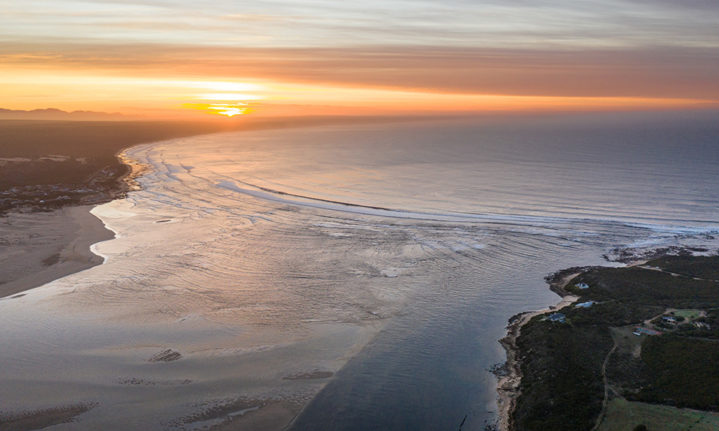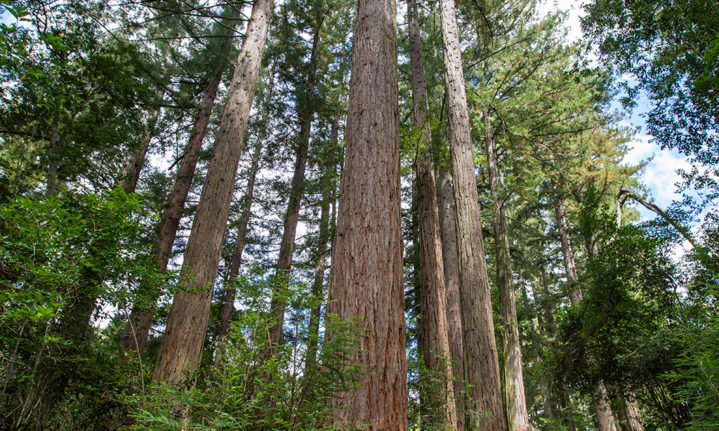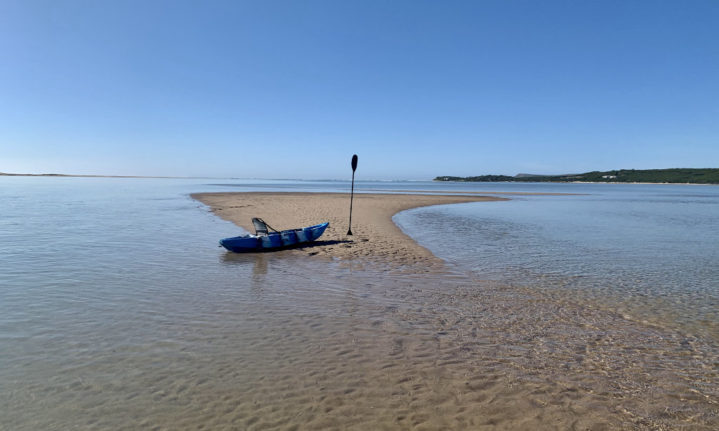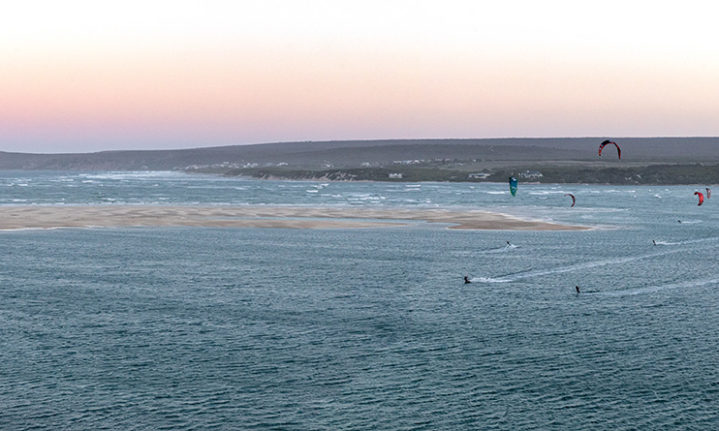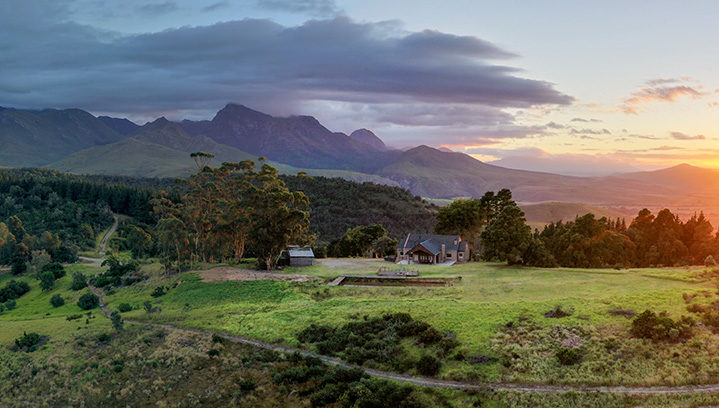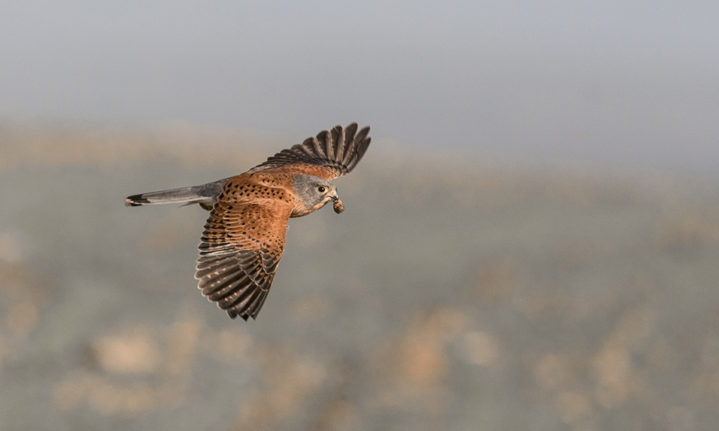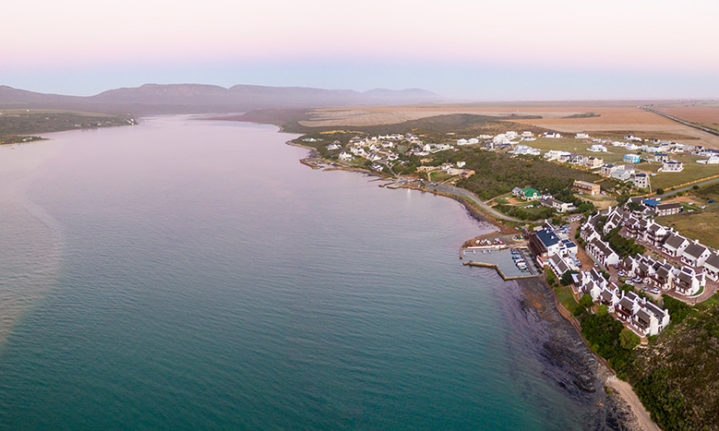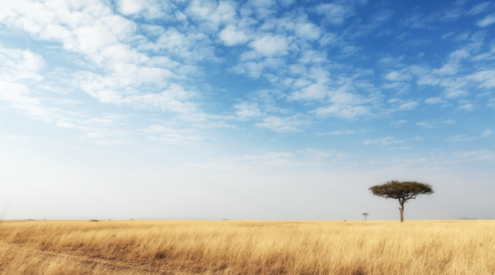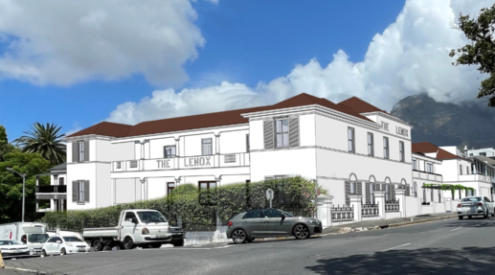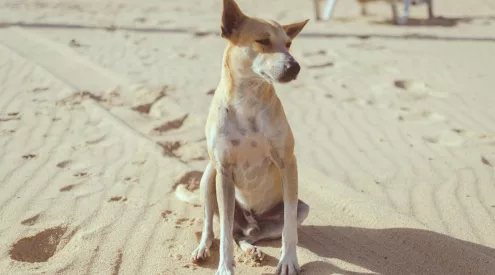Crowds melt away in the rural idyll of Hessequa, the Khoi name given to the Southern Cape coastal region between the Breede and Gouritz rivers, meaning ‘people of the trees’. It’s the perfect place to escape city life.
Words & Photos Anton Crone
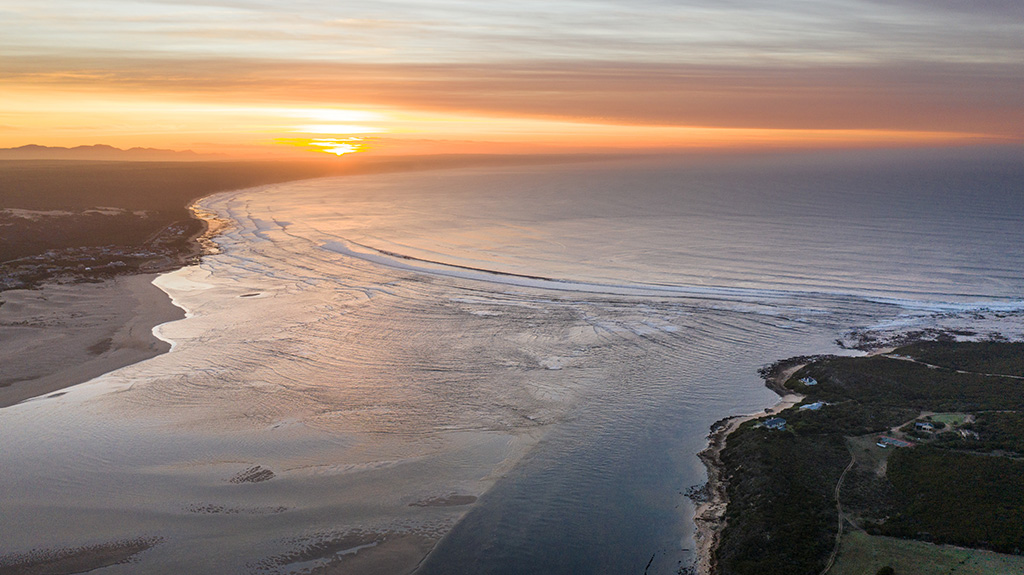
Sunrise over the Breede River mouth promises a rewarding day for fishing folk and adventure seekers.
‘Don’t follow the herd,’ people say. Even so, you might find yourself among sheep. My wife, Sarah, and I were surrounded by a bleating cacophony on the west bank of the Breede River mouth. Across the water, the lights of Port Beaufort and Witsand glittered as the sun disappeared. Turning back to the holiday home a friend had lent us near Cape Infanta, we waded between sheep, invaders of the river-fed lawn too juicy to resist. Yes, I’d accidentally left the gate open, but the animals were soothing company – a metaphysical woolly jumper in the chilly air. It was good to have escaped Cape Town’s rat race and have found a different herd. Sitting on the porch, my mind drifted to the other side of the river, and the inevitable question came up: was it greener over there?
A subsequent trip took us across the Breede via the sleepy hamlet of Malgas. Having driven the dirt road through rolling hills and pasture, we were feeling decidedly rural and looked forward to the novelty of boarding a ferry across the river. A small diesel pont waited for us and we stopped at the mooring, revving the engine with anticipation. Time slows down on the Breede, as demonstrated by the ferryman who was indifferent to our presence. He sat in his cockpit sipping languidly at his tea, and only kicked the engine to life once he’d drained the cup. His assistant materialised from a siesta beneath some gum trees; ambling slowly over to the gate, he finally opened it for us to board. It all made sense when he explained we didn’t have to pay – this was a public service, the post office version of crossing a river.

Grootvadersbosch Nature Reserve is home to a forest unlike any other you’ll see in Southern Africa.
The passage itself was short, but the break in the journey made us feel like we’d crossed to another world, something you don’t sense when you speed over the Breede on the N2 bridge further upstream. We slowed down even more to enjoy the rural scenery and at dusk we rolled into the riverside village of Port Beaufort where, munching on the grassy slopes above our lodge, was a significant herd of chubby sheep. The truth? The grass was greener.
With its own mooring on the estuary, and a bevy of boats, Breede River Lodge is not only ideal for families who fish, it has an adventure contingent offering additional water-born spills such as kiteboarding, kayaking and SUPing. In places the estuary is shallow enough for novice kiters to find their feet, something lacking when I took a kiting course at Blouberg Beach, an episode that involved swallowing a lot of sea water while being dragged through the surf like a plough.

Sand banks make for good stopovers on your journey around the Breede River estuary; kite surfers also use them for launch pads.
So, it was kayaking for me and Sarah, and I paddled happily from this shore to that, exploring rock pools, wading in the shallows and swimming to cool off in the growing heat. We claimed sandy islands – the Isles of Crone – and watched kite surfers dance across the sun well into the evening.
Of course, we weren’t the first to step on these sandy islands. Fishermen walk the shallows hunting for sand prawns which they syphon with pumps. These are used to attract a variety of fish, but the large specimens of cob are proving elusive these days. Not so a few decades ago. The walls of the lodge display photos of great catches, the most remarkable being a 50kg beast caught on a 7kg line in 1972 by a lovely dame who was smaller than her prize.
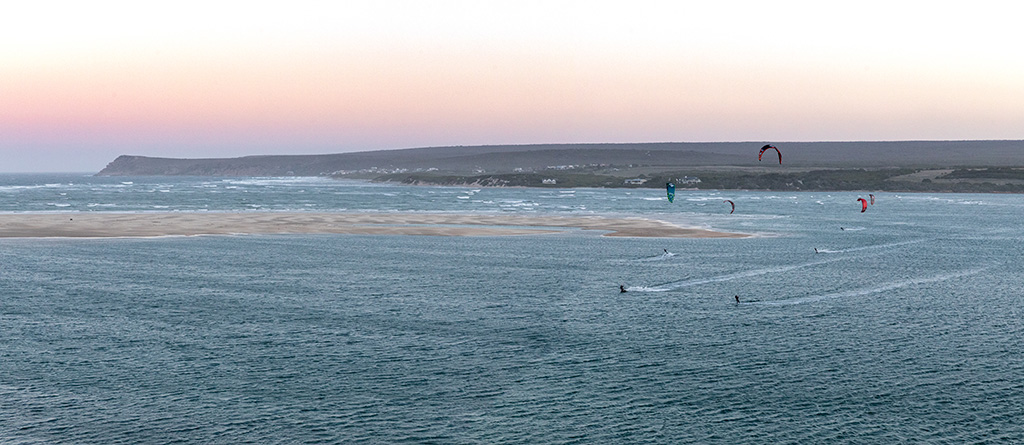
kite surfers also use them for launch pads.
Val Barry was her name, one that appears on a grave at the Barry Memorial Church, built in 1846. This family is synonymous with Port Beaufort, the patriarch, Joseph Barry, having established the first harbour and trading store here in the early 1820s. He was instrumental in shipping urgent supplies from Cape Town to this drought-ravaged region at speed. By sea it took a few days whereas the wagon journey overland took as long as three weeks. His trade routes extended as far as the little Karoo and the village of Barrydale just over the mountains was eventually named for him.
The highlands beckoned, and we drove between rocky pastures where sheep were giving birth to lambs in anticipation of the rainy season. Sticking to the dirt roads, we made a small detour to the enchanting hamlet of Vermaaklikheid on the Duiwenhoks River, then headed north towards the Langeberg eventually crossing the N2 at the small town of Heidelberg. A 20km climb towards the mountains and the dry plains gave way to lush hills and valleys in this transition zone between winter and year-round rainfall.

Strawberry Hill Lodge has remarkable views over the Langeberg and Grootvadersbosch Nature Reserve.
On the edge of Grootvadersbosch Nature Reserve, our digs at Strawberry Hill Farm had an incredible view over forested glades. This large converted farmhouse is ideal for families or friends, particularly if mountain biking is your thing. A long row of bike and equipment racks line the entrance hall and the trails here are diverse and picturesque. A network of well-marked routes takes you along various grades, including technical single tracks that dive into sunny valleys and onto long winding dirt roads where the pretty farm scenes are so distracting you might T-bone a cow, of which there are plenty.
Swapping two wheels for takkies, we explored the nature reserve the next day, loving the extraordinary bird hides that are built high in the canopy of trees, all the better for spying the feathery specials you’d struggle to see from the ground. We added grey cuckooshrike, Knysna woodpecker and black saw-wing to our list of lifers. Narina trogons can be spotted here, as well as Victorin’s warbler and a few other specials. If it’s not birds you’re after, there’s much to admire about the trees. Many of the indigenous stinkwoods, yellowwoods, alders and ironwoods survived the axe of the previous two centuries, and CapeNature is reclaiming the area from alien trees planted by foresters.
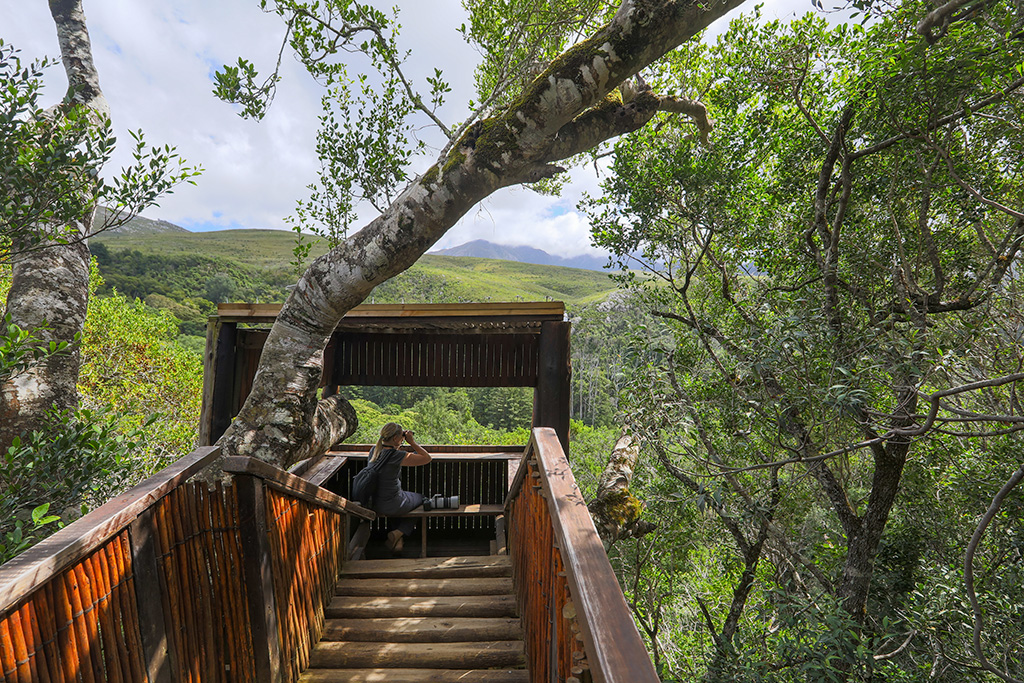
Bird hides high up in the Grootvadersbosch forest canopy are a rare opportunity for twitchers to find those special sightings
Walking beneath the canopy on the hiking trails, the concept of ‘forest bathing’ is given real meaning as the tall boughs sway and creak in the breeze. Sound is dampened, the ground is moist underfoot and sips of water from clear streams are filtered by countless leaves. Then you go around a bend and you’re suddenly surrounded by redwood trees. The sensation is like stepping into another world – California to be exact. Planted by woodsmen over 100 years before, some of these coastal redwoods reach higher than 40 metres. Despite being aliens – and conspicuous ones at that – they are seen to have heritage value and are protected. After admiring them for a while we bid farewell to the Americans, ambassadors from a time when America was truly great.
As the weekend came to an end, we set course for home, taking our time winding through the valley farms. We were reluctant to leave this rural idyll. Sheep bleated farewell, cows lowed and farmers waved until we reached the N2 highway where cars sped by, oblivious to the tranquility on either side of the road. Turn right onto the tarmac and we’d cross the Breede River in no time, rejoining the rat race two and a half hours later. Cross the highway and we’d take a slow dawdle to Malgas, where we’d no doubt be delayed on this enchanting side of the river. The choice was obvious, so we took it.
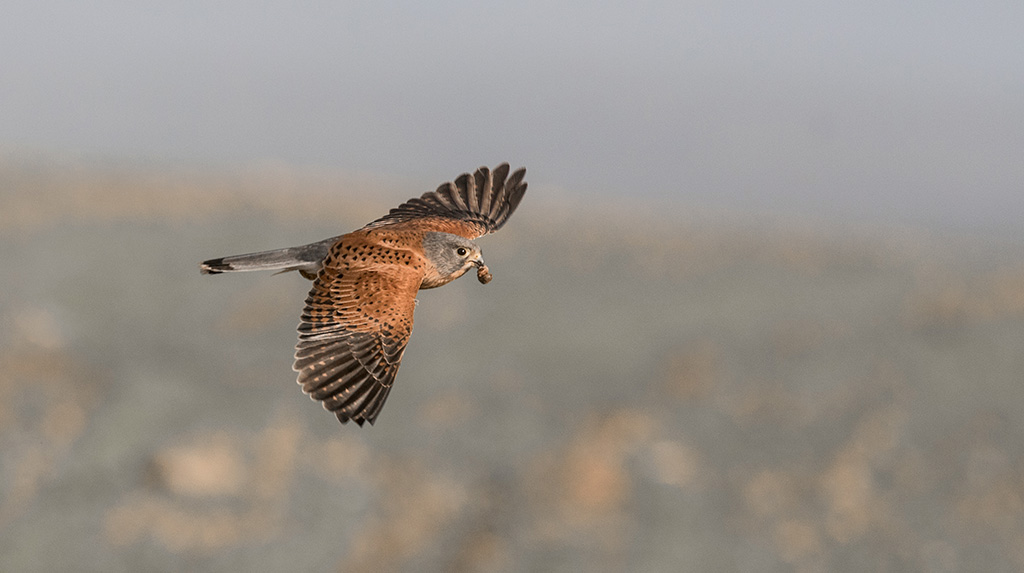
The more common varieties like this rock kestrel do not go unappreciated.
Stay Here
Strawberry Hill Farm has three self-catering options: Strawberry Hill Lodge with four rooms, four bathrooms, a large living area and fully equipped kitchen with oven and open fireplace, and a separate braai area outside. Ideal for mountain bikers, from R3 000, max nine guests. Forest Lodge is closer to the forest with three bedrooms and a fully equipped kitchen with a huge open fireplace, from R1 800, max six guests. Jenny’s Cottage is a spacious one-bedroom place with lovely mountain views. Sleeps three, from R1 100. 079 335 0269 strawberryhillfarm.co.za
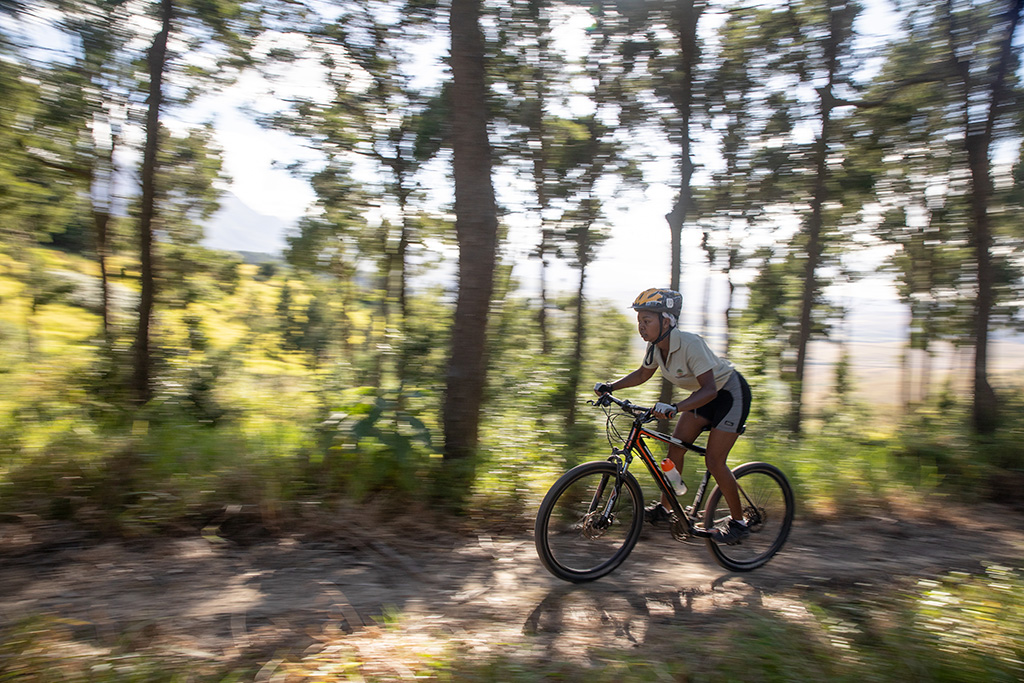
A variety of MTB trails makes Strawberry Hill Farm a wonderful base from which to explore forests and hills.
Grootvadersbosch Nature Reserve has 11 cabins sleeping from four to five people, each with two bedrooms, inside braai area, fully equipped kitchen, lounge with a built-in fireplace and outside braai area, from R920 per night. There are nine wonderful campsites, each with a wooden deck and screen, water and scullery, lights, electrical and USB points, braai pit, table and seating, from R260 per night. At the time of publishing, more campsites and play facilities for children were being constructed. 087 087 8250 capenature.co.za
Breede River Lodge has many options, from Fisherman’s Units for two with communal braai facilities; luxury two- and three-bed units with views over the river, to large family units sleeping eight to 10, from R520 to R2 600 per night, self caterimng, or eat in the PiliPili Restaurant and Bar. 072 767 3779 breederiverlodge.co.za
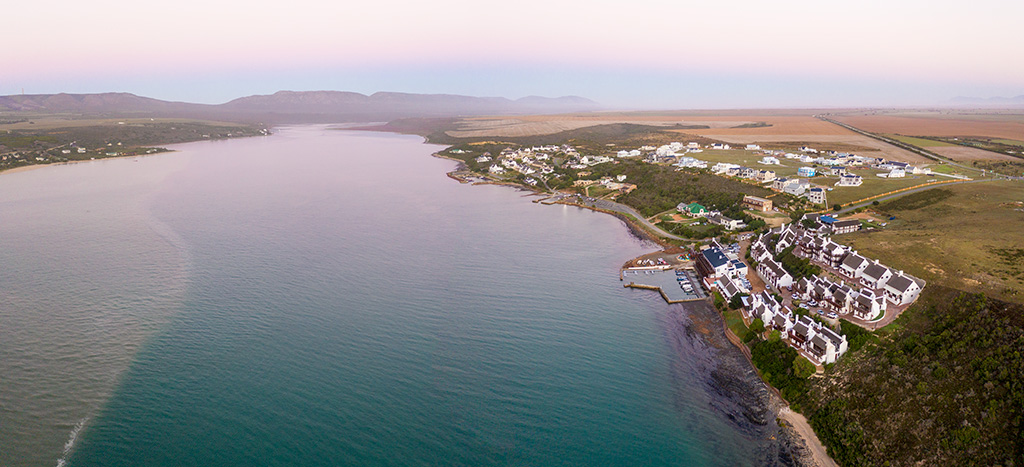
Breede River Lodge
At the lodge, PiliPili Xtreme Sport Centre offers a variety of activities, from kitesurfing lessons, SUP and kayak rentals, to fishing charters and cruises. 028 537 1783 pilipili.co.za
What’s in a name?
In 1488, the Portuguese recognised Breede River mouth as one of the finest natural anchorage on the Southern Africa seaboard. They named it St Sebastian’s Bay almost a century later in honour of the reigning King of Portugal, Sebastião I. When it was deemed navigable by vessels in 1817, the governor of the Cape Colony, Lord Charles Somerset named the east bank after his father, the 5th Duke of Beaufor.
Alien wonders
The tallest coastal redwood (Sequoia sempervirens) is named Hyperion, discovered in 2006 in a remote part of California’s Redwood National and State Parks. Measuring over 115 metres, it’s the tallest tree in the world, with estimations that it’s between 600 and 800 years old. Redwoods can live 2 200 years or more. Hang in there, Hyperion.









